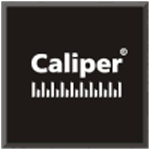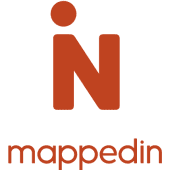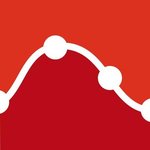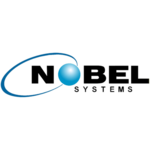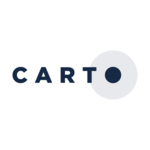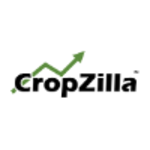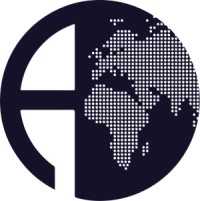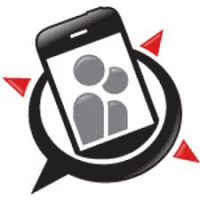What Is Mapping Software?
Mapping software is a sophisticated tool that lets you generate dynamic maps, visualize geographic data, and analyze spatial relationships. It is an invaluable resource for companies, organizations, and individuals seeking to make data-driven decisions based on location and geography. With the growing relevance of spatial information in modern society, mapping software has become an indispensable tool for a variety of businesses, including retail, real estate, logistics, and urban planning.
At its foundation, mapping software use Geographic Information Systems (GIS) technology to collect, store, manipulate, and analyze geographical and spatial data. This information might range from addresses and postal codes to satellite images and topography data. Mapping software creates a visual representation of data by layering it on top of a base map, making it easier to discover patterns, trends, and linkages.
One of the primary benefits of mapping software is its ability to generate interactive and customisable maps that can be readily shared and accessed across a variety of devices. This enables team members to collaborate and share data, making mapping software an ideal tool for project management, market analysis, and decision-making. Furthermore, mapping software frequently includes additional capabilities such as geocoding, routing, and geospatial analysis tools, allowing users to conduct complicated spatial analyses and derive useful insights from data.
This makes mapping software an essential tool for firms looking to optimize their operations, find new opportunities, and make strategic decisions. When contemplating purchasing mapping software, it is critical to identify your individual goals and select the product that best meets them. The extent of customization, supported data sources and formats, pricing models, and user interface are all important considerations. ArcGIS, Google Maps Platform, and Mapbox are three major mapping software solutions, each with their own distinct capabilities and intended audience.
What Are The Recent Trends In Mapping Software?
As technology advances, mapping software evolves to include increasingly advanced features and capabilities.
Some of the latest trends in mapping software are:
1. Cloud-Based Mapping: As cloud computing becomes more prevalent, mapping software is increasingly transitioning to a cloud-based approach. This implies that users can access their maps from any internet-connected device, making it easier to collaborate and share information.
2. Real-Time Updates: One of the most important developments in mapping software is the ability to get real-time updates. This means that the maps are regularly updated with the most recent data, giving users accurate and up-to-date information.
3. User-Friendly Interfaces: Mapping software is becoming more accessible to those with little or no technical background. Users may simply build and customize maps thanks to user-friendly interfaces and intuitive design, without requiring extensive training.
4. Integration With Other Software: Many mapping software packages now include integration with other corporate programs including CRM systems, project management tools, and data analysis software. This enables more seamless integration of data and processes, making it easier for organizations to manage and use their mapping data.
5. Augmented Reality (AR) Capabilities: AR technology is being integrated into mapping software, allowing users to view real-world locations and items in a virtual environment. This can be advantageous to a variety of businesses, including building, urban planning, and navigation.
6. Artificial Intelligence (AI) And Machine Learning: Mapping software uses AI and machine learning algorithms to automate and optimize map generation and data analysis. This can save consumers time and effort while providing more accurate and relevant data.
7. 3D Visualization: 3D visualization is gaining popularity in mapping software. This enables a more realistic and immersive portrayal of geographical data, making it easier to comprehend and analyze. As you evaluate various mapping software solutions, keep these current trends in mind to identify the ideal solution for your needs and business goals. With the ongoing growth of technology, it is critical to stay current and take advantage of the most recent features and capabilities in mapping software.
Benefits Of Using Mapping Software
Mapping software is a sophisticated tool that visualizes data on a map, allowing users to quickly understand complex information and make informed decisions. It has applications in a variety of areas, including logistics, marketing, and urban planning.
Here are the top advantages of using mapping software for business purposes.
1. Accurate Data Visualization: One of the primary benefits of mapping software is its ability to effectively represent massive data sets on a map. This makes it easier for consumers to spot patterns, trends, and linkages among data points. It delivers a comprehensive perspective of your data, allowing you to make more informed and data-driven decisions.
2. Improved Planning And Analysis: Mapping software provides enhanced tools for users to plan and analyze data in real time. It can assist in identifying suitable places for business expansion, optimizing delivery routes, and analyzing sales success across regions. This can save time and resources, allowing you to make informed decisions more rapidly.
3. Improved Communication: Maps are a universal language that is easily understood by anyone. Mapping software allows users to generate interactive and visually appealing maps that successfully communicate complicated information to stakeholders, clients, and team members. This promotes communication and collaboration, resulting in greater understanding and decision-making.
4. Cost And Time Efficiency: Mapping software allows you to easily import data from several sources, decreasing the need for human data entry. This not only saves time, but also reduces the likelihood of mistakes. It also aids in route optimization, saving travel time and fuel consumption. Overall, mapping software can assist streamline procedures and reduce costs for your company.
5. Customization And Personalization: Mapping software provides a variety of customization possibilities, allowing customers to design maps tailored to their specific business requirements. Layers, markers, labels, and custom map styles may all be customized to fit your brand and industry needs. This level of customization makes mapping software a useful tool for a variety of organizations.
Important Factors To Consider While Purchasing Mapping Software?
When it comes to buying mapping software, there are a few important elements to consider. These aspects will eventually define the software's usefulness and performance, thus it is critical to properly examine and assess each one before making a decision.
Here are some crucial considerations to consider while selecting mapping software:
1. Mapping Capabilities: This is arguably the most important feature to consider when selecting mapping software. You should thoroughly evaluate the software's mapping capabilities to ensure they meet your specific needs. Look for advanced visualization, terrain analysis, 3D mapping, and data visualization to ensure that the program is capable of handling difficult mapping jobs.
2. User-Friendly Interface: When it comes to mapping software, ease of use is essential. A complex and convoluted interface can reduce productivity and lengthen the learning curve for new team members. Look for software with a simple and intuitive interface that anyone can use, regardless of skill level.
3. Compatibility And Integration: Make sure the mapping software you chose is compatible with your current hardware and software systems. This will guarantee seamless integration and data transmission between multiple systems, avoiding potential compatibility difficulties.
4. Customization Options: Each organization has distinct mapping requirements, and the software they chose should match those. Look for software that allows you to customize it, such as customisable maps and data layers, so that it meets your specific requirements.
5. Data Storage And Security: Because mapping software handles sensitive data, security measures must be carefully considered. Make sure the software includes enough data storage and backup choices, as well as strong security safeguards to keep your data safe from illegal access.
6. Money: As with any purchase, money is an important issue to consider when buying mapping software. Make careful to examine the pricing and features of various software solutions to discover the greatest deal for your money. When calculating the total cost, consider licensing fees, maintenance charges, and any other hidden fees.
7. Customer Support And Training: Because complicated software, such as mapping software, may require some training and technical support, it is critical to assess the quality of customer support and training choices provided by the provider. Look for software vendors who give resources such as training videos, user guides, and technical assistance to help you get the most out of their product.
By weighing these critical elements, customers may make an informed selection when selecting mapping software. When evaluating and analyzing alternative software options, keep your organization's specific objectives and requirements in mind to ensure the greatest fit. Keep in mind that the correct mapping software may significantly improve data presentation and analysis, resulting in more informed and strategic decision making.
What Are The Key Features To Look For In Mapping Software?
When choosing mapping software, seek for crucial features that will fulfill your individual requirements while also ensuring efficiency and accuracy in your mapping tasks.
Here are some important characteristics to look for in mapping software.
1. User-Friendly Interface: A user-friendly interface is essential in all software, including mapping software. Look for mapping software with a simple and user-friendly interface that allows you to easily generate maps and analyze data.
2. Customizable Map Styles And Data Visualization Options: The ability to change map styles and data visualization options is critical for designing maps that effectively communicate information. Look for mapping software that provides a range of map designs, symbols, and colors to help you build visually appealing and useful maps.
3. Geocoding And Address Matching: Geocoding is the process of translating addresses into geographic coordinates, which allows you to precisely plot places on a map. To assure map accuracy, use mapping software that has geocoding and address matching functions.
4. Multiple Data Import Options: Look for mapping software that can import data from a variety of sources, including spreadsheets, databases, and web sources. This will save you time and effort when adding data to your maps.
5. Advanced Data Analysis And Spatial Querying: The capacity to analyze data and perform spatial searches is critical for making informed judgments using map data. Make sure the mapping software you chose includes advanced analytical capabilities and the ability to run spatial queries.
6. Collaboration And Sharing Features: If you are working on a mapping project with a team, seek for software that allows you to collaborate and share. This enables several users to access and contribute to the same map, making it easier to collaborate and make changes in real time.
7. Mobile Compatibility: In today's fast-paced world, the ability to access and use mapping software from mobile devices is critical. Choose mapping software that includes a mobile-friendly version or a separate mobile app.
8. Customer Help: It is usually advantageous to have access to customer support when utilizing new software. Look for mapping software that provides dependable customer assistance, whether by phone, email, or live chat, to help you with any technical issues or problems you may have.
By carefully considering these critical aspects, you may select mapping software that suits your individual requirements and enables you to generate accurate, informative, and visually beautiful maps. When selecting a decision, keep your budget, the size and complexity of your mapping projects, and any future requirements in mind.
Why Do Businesses Need Mapping Software?
Mapping software is a valuable tool that organizations of all sizes may benefit from. Whether you're a tiny local firm trying to expand your reach or a multinational corporation managing numerous sites, investing in mapping software can significantly improve your operations and overall success.
Here are some of the most important reasons why firms need mapping software:
1. Visualize Data: Mapping software helps businesses to transform their data into interactive visual maps, making it easier to see patterns, trends, and linkages. This can provide useful information for making company decisions and identifying areas for improvement.
2. Increase Efficiency: Mapping software allows firms to plan and optimize routes for delivery and sales workers, lowering travel time and fuel costs. It can also aid in resource management by tracking the whereabouts of assets and personnel in real time.
3. Improve The Customer Experience: Mapping software allows businesses to geolocate customers and reply rapidly to their demands. This can enhance customer service, foster loyalty, and eventually boost sales.
4. Increase Market Reach: By employing mapping software to locate new places and demographics, organizations may broaden their target market and reach more customers. This can result in improved revenue and expansion potential.
5. Improve Marketing Strategies: Mapping software can assist firms in understanding the geographical distribution of their consumer base, allowing for more targeted marketing initiatives. It can also help with the choosing of new retail sites.
6. Streamline Field Operations: Mapping software may transform firms with field operations. It enables teams to collaborate in real time, manage tasks and progress, and optimise schedules to increase productivity.
7. Make Better Business Decisions: Mapping software offers organizations sophisticated data visualization and analysis options. Businesses may make better decisions, identify trends, and forecast future results by visualizing their data on a map.
How Much Time Is Required To Implement Mapping Software?
The installation time for mapping software varies depending on a number of factors, including the software's complexity, the size of your firm, and the level of customization necessary. On average, it can take anywhere from a few weeks to a few months to fully integrate mapping software and guarantee it is functional for your unique requirements.
First and foremost, mapping software is intended to accelerate and simplify the process of creating and sharing visual representations of data. This implies that, while it may take some time to set up first, it will eventually save you time and effort in the long run. The size of your firm can also influence implementation time. For smaller firms with fewer staff, the procedure may be faster because there are fewer users and data to move.
Larger firms, on the other hand, may have a more complex setup and will need more time to completely incorporate mapping software into their existing systems and procedures. Furthermore, the extent of customization required can influence implementation time. If you want a simple map with conventional features, the implementation procedure may be relatively rapid.
However, if you require more extensive features and integrations, it may take longer to configure and ensure that everything works properly. It is also worth noting that many mapping software vendors give training and support to ensure a seamless implementation process. Using these tools can assist speed up the setup process and provide your staff with the knowledge and skills they need to utilize the software efficiently.
What Is The Level Of Customization Available In Mapping Software?
When it comes to mapping software, the degree of customization offered varies according on the software and its features. Some mapping software may have a restricted range of modification choices, but others have more extensive customization options. Finally, the level of customization provided has a substantial impact on the software's functionality and ability to match your mapping requirements.
When analyzing the extent of customisation in mapping software, one factor to examine is the available map styles and design options. Some applications may provide pre-made templates or limited design possibilities, but others allow users to freely modify every component of the map, including colors, typefaces, markers and icons. This is especially useful for corporations or organizations searching for a visual aesthetic that matches their brand or to create professional-looking maps.
Another element to consider is the ability to add and change layers on the map. This is especially handy for building detailed and interactive maps for a variety of applications, including business presentations, instructional resources, and marketing efforts. Users can construct a complete and informative map by adding numerous layers such as road networks, terrain, landmarks, and more, thanks to the great level of customisation.
In addition to cosmetic customization, some mapping software allows you to customize the data and information provided on the map. This may include the ability to import data from other sources, add text boxes or markers, and even alter data points to change how they appear on the map. This level of customization is appropriate for those who want to show complex data and information in a visually appealing manner.
Finally, the level of customisation provided can affect the software's usability. Software with a high level of customization may take more time and skill to fully employ, whereas software with less customization choices may be easier to use. When choosing a mapping program, you must examine the level of customization that best meets your goals and talents.
Which Industries Can Benefit The Most From Mapping Software?
Mapping software, often known as geographic information system (GIS) software, is a powerful tool for collecting, managing, and analyzing data on location and spatial patterns. While this technology has typically been utilized in urban planning and government agencies, its applications have grown in recent years to include a wide range of businesses.
In this buyer's guide, we'll look at which industries can profit most from mapping software.
1. Real Estate: Mapping software can transform the real estate industry. It enables real estate experts to map properties, assess market trends, and find prospective development opportunities. This can save time, improve efficiency, and lead to more informed judgments.
2. Retail: Retailers can utilize mapping software to assess consumer behavior and preferences based on geographic data. This can assist companies in determining the ideal sites for new stores, optimizing their supply chain, and even tailoring marketing efforts based on geographic data.
3. Logistics And Transportation: Mapping software can help with everything from fleet management to route planning. It can help them track cars, develop more effective routes, and reduce delivery times.
4. Agriculture: Precision agriculture has been transformed by mapping software. Farmers can improve production and lower costs by producing maps of crop yield, soil attributes, and weather patterns.
5. Healthcare: Mapping software can help healthcare personnel analyze population demographics, pinpoint illness hotspots, and prepare emergency response techniques. It can also assist healthcare facilities enhance their operations and provide better patient care.
6. Tourist & Hospitality: The tourist and hospitality industries rely significantly on location data and mapping software to promote attractions, manage travel routes, and provide personalised experiences for its customers.
7. Environmental Science: Mapping software is essential for environmental science since it creates digital maps of natural resources, monitors climate change, and predicts natural calamities. This technology is also employed in environmental management, including the mapping of protected areas and wildlife habitats.
8. Insurance: Insurance companies can use mapping technologies to identify risks and compute premiums based on geographical information. This can help them enhance accuracy, prevent fraud, and provide more comprehensive insurance coverage.
Conclusion
To summarize, mapping software is an invaluable tool for any individual or business trying to improve their data visualization and analysis processes. Throughout this buyer's guide, we've covered the important factors to consider when choosing mapping software, such as features, pricing, usability, and customer service. Before making a decision, make sure to carefully consider your individual needs and budget.
Mapping software is offered in a variety of alternatives, ranging from free to powerful enterprise-level solutions. Keep in mind that the most expensive solution is not always the best fit for your requirements, and vice versa. It is critical to investigate and test several software to determine which one provides the best combination of features and pricing for your firm.
When selecting mapping software, it is also crucial to prioritize usability and customer service. A user-friendly interface and solid customer support can help your staff adopt and operate the program smoothly and effectively. Finally, by carefully examining your demands and completely evaluating the numerous options available, you may choose mapping software that suits your individual requirements while also allowing you to efficiently analyze and visualize your data. We hope this buyer's guide has given you enough information to make an informed decision and select the best mapping software solution for your firm.


